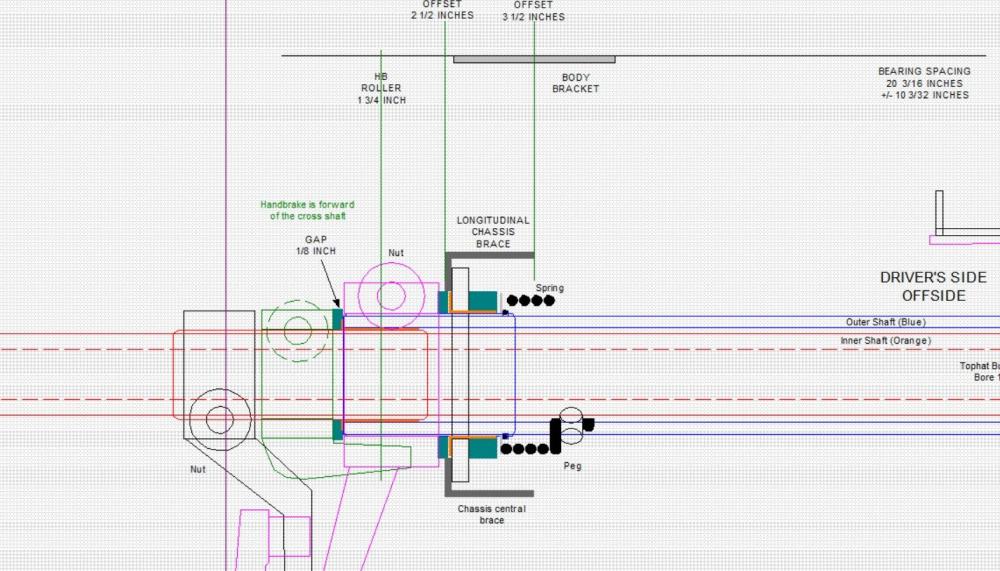31-07-2022, 07:43 PM
(This post was last modified: 31-07-2022, 07:45 PM by John Cornforth.)
Hi again

 James
James
The brackets (shown in purple on my drawings) are standard Austin, and I was lucky enough to get some along with a shaft so had no need to create them. I ended up buying two shafts at different times to get enough parts to create one good one. A case of "I've started so I will finish".
As standard, the brackets are riveted to the chassis rails but the rivets can be replaced by quarter-inch hi-tensile bolts and nyloc nuts. This makes cross shaft fitment feasible without removing the body, but you still need to thread it through the longitudinal chassis brace that carries the handbrake. So yes, fiddly is the word.
The centre bearing sits in a square plate which bolts to this chassis brace. Its 4 holes are slighly elongated, as are the ones in the chassis, which allows a bit of fore-aft and up-down tweaking before it is bolted up hard.
The brackets (shown in purple on my drawings) are standard Austin, and I was lucky enough to get some along with a shaft so had no need to create them. I ended up buying two shafts at different times to get enough parts to create one good one. A case of "I've started so I will finish".
As standard, the brackets are riveted to the chassis rails but the rivets can be replaced by quarter-inch hi-tensile bolts and nyloc nuts. This makes cross shaft fitment feasible without removing the body, but you still need to thread it through the longitudinal chassis brace that carries the handbrake. So yes, fiddly is the word.
The centre bearing sits in a square plate which bolts to this chassis brace. Its 4 holes are slighly elongated, as are the ones in the chassis, which allows a bit of fore-aft and up-down tweaking before it is bolted up hard.




